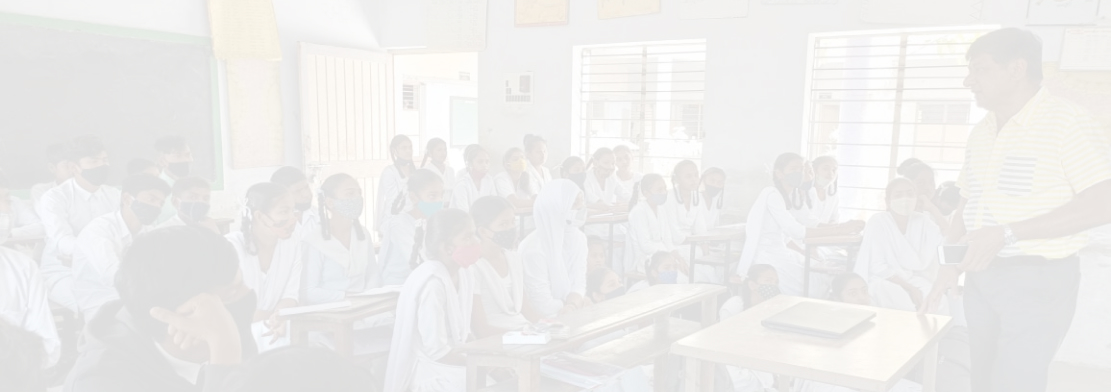
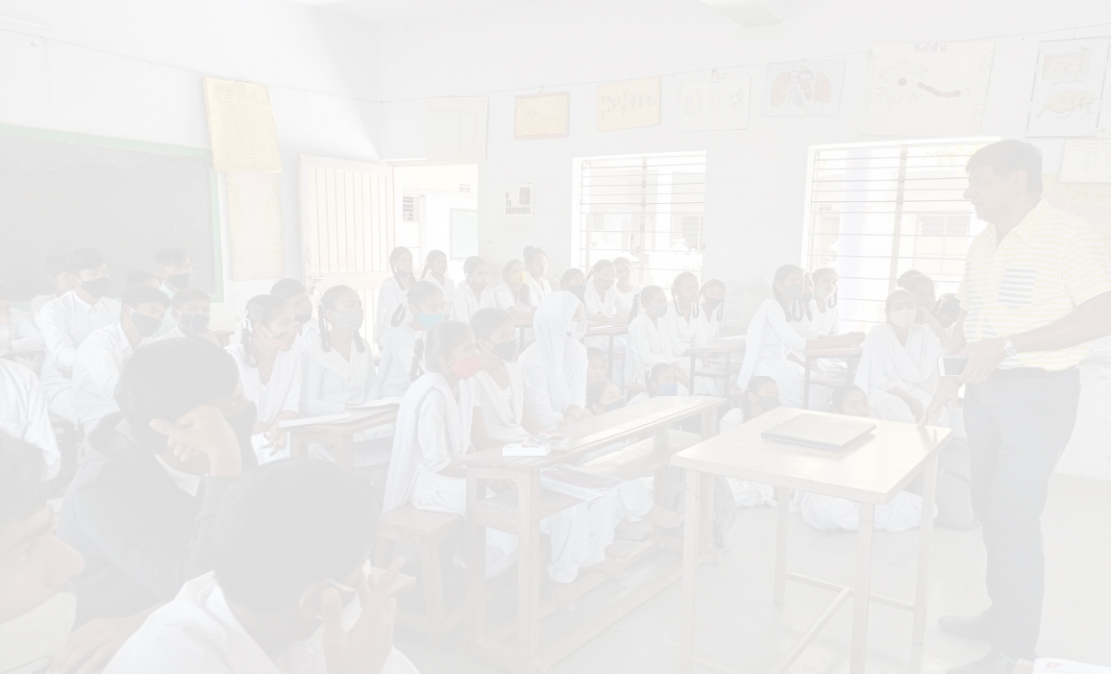

Basic English Learning Capsule
Rural students have lots of apprehension to learn English. For years Cosmo Foundation was engaged to teach English in rural areas. The Organization focused to break the barriers to learn English, correct skills of speaking, reading and writing with day-to-day communication, demonstrations and practical exercise. Looking at the positive feedbacks from learners, Cosmo Foundation developed “Basic English Learning Module”. It has pre-recorded video session with exercises, answer keys and user’s guide.
Learn English In
Language
Videos for Beginners
Module - 1 | Easy English for Beginners
Brief : Cosmo Foundation - Encouraging rural youth and children to identify their potentiality through educational intervention in Computer Literacy Program, Foundational Literacy and Basic English Learning Fluency.
Brief understanding of the objectives of the Basic English Learning Program which includes - LSRW method (listening, speaking, reading and writing). A learner can acquire basic word formation, sentence construction and writing skills with correct pronunciation.
The purpose of pre-recorded video session is - that an opportunity is provided to rural children, youth and teachers to learn English with experienced Senior English Faculty.
A brief on the Basic English Learning Program, importance of learning English, objectives of the prerecorded session followed by subject contains in Module 1 with complete flowchart.
Guideline and tips for the facilitator - to know students social, emotional and basic literacy level. Also make them comfortable by creating positive environment, breaking inhibition & fear of learning, creating a conducive environment, conducting regular revisions and providing regular assignments, etc.
Pretest papers followed by model answers consisting of - alphabets in fourlines(capital and small) and matching pictures with the correct alphabet, word formation (capital and small).
Brief about - Importance of learning English and its benefits, How English language plays an important role for higher education and the availability of different jobs and opportunities with good salaries.
Understanding the simple and correct method of learning English with correct pronunciation, spelling and meaning, reading English story books and newspapers, watching news/cartoons in English and participating in everyday English conversation.
Brief description about Loan Words ie: Loan words are the English words that are adopted by learners instead of using words in their mother tongue and are more popular in any regional language. For example - Railway Station, Police Station, Mobile Phone, etc.
Explains the importance of learning lines and curves with examples and demonstration for correct English Alphabet Writing.
Explains the importance of learning the English language with correct grammar and basic concepts using a proper letter from the alphabet and form words and sentences.
Learning vowels and consonants of English language with the help of Gujarati alphabet language for better understanding.
Learning word construction/word formation with correct and scientific method for framing correct spelling with examples and exercises.
Leads learners towards correct pronunciation and a better understanding of spellings. Strengthens the speech sounds. A scientific approach to learn the skill of reading, writing and speaking with the correct pronunciation.
Phonics are the blend of vowels and consonant . Learning the concepts of phonics with the help of exampls, formation of 3 letter words with the blend of vowels and consonants with at, et, ot & its families .
Sentence formation based on phonics contains the combination of at, ot, ut, it, et families all together to form a sentence. Articles such as a, an, the are also used in sentence formation and understanding with easy examples.
Phonics part 2 - usage of am, an, ap, ag, an, ed, eg, en families with 3 letter words and sentences by blending different vowels and consonants with simple examples.
Forming sentences using an, ap, ag, am, ed, eg and en families with 3 letter words and sentences by blending different vowels and consonants with simple examples.
Understanding English numbers (Cardinal and Ordinal) and their use through simple examples and exercises.
Learning different types of days and names of all the months with demonstration on how to see the calendar.
Module - 2 | Building Foundation
Introduction to Module 2. Learning body parts, different colors and shapes with their names, self-introduction, rhyming words and followed by basic grammar with examples and exercises.
A guideline for teachers and facilitators to know students, their social emotional needs and their abilities about reading and writing skills.
Introduction about greetings and basic communication skills when we meet someone in social life.
The basics of human body and its parts viz. head, neck , tongue, ear and many more with pictorial identification and exercise.
Learning different colors and shapes with their names, sound, spelling, identification, examples, and exercise.
Cardinal and Ordinal numbers and their applications in Maths and in day to day life.
Introduction to occupation - jobs and business as a means of earning livelihood with pictorial identification and illustrations.
Learning the importance of self-introduction in an easy and correct method to represent one's identity, personality and represent oneself in various situations.
Family relations - the essence of family bonding and interaction in every occation in one's social life.
Learning the importance of time as it is an infinite concept in English and its day to day usage.
Importance of capital letters used under different types of nouns and adjectives with correct rules as an ornament in English language.
A dictionary contains a list of the words in a language arranged in alphabetic order with meaning, pronunciation and sentence examples.
An action verb expresses action, giving orders, advice and instructions. Learning various action words with different examples in sentences, pictorial identification and exercises. For example - eat, read, sit, walk etc.
An article is a word that comes before a noun to show if its specific or general meaning. Learning its correct use with sound, pronunciation and solving the questions with multiple exercises.
A brief introduction about synonyms & antonyms that mean - similar and opposite words, and their meanings to enhance vocabulary power.
Learning application of is/am/are to depict the tenses of the verbs with rules, sentence formation in both English and Gujarati languages.
Use of we and they and learning the differences in their usage even though they are both plural, personal pronouns.
Use of my, your, his and her to depict possession or ownership of a person or event or object with easy and simple examples, rules and exercise.
Importance of Our, Your & Their - various applications in different sentences under functional grammar.
Learning words beginning with WH and formation of questions using what, where and which in the English language with simple lucid examples.
"Learning WH questions using What, When, Who, Which, When, Why etc in day to day use in social life. "
Module - 3 | Intermediate Level
Guidelines for teachers and self-learners to study the content and exercises of intermediate level and equip oneself towards learning English perfectly with proficiency and accuracy.
Every name is called a noun. It is a part of speech that is used to name or identify a person, place, thing or idea.This video helps one to identify nouns as a part of speech in sentences.
Pronouns are words that take the place of a noun or noun phrase. It is used to replace a noun.e.g. (she/he, him/her, my/her). The video makes us understand how pronouns help in using fewer words and keeping sentences shorter.
In English grammar, verbs are words that indicate an action, occurrence or state of the subject. This video will helps in understanding verbs usage in sentences to explain the action given in the verb.
We discuss the definitions, uses and modals in this video. Adjectives are words that describe or modify a noun or pronoun. An exercise based video to make you practice using adjectives.
An adverb is a word that , describes or modifies a verb, adjectives or adverb. Adverbs can be used to show manner, degree, place and time.
A preposition is used before a noun and a pronoun to show place, time and direction. In this video we learn about many words in preposition which are used with numerous examples.
Conjunctions join two words. This video helps us to learn and understand the coordinating conjunctions like 'And', 'but' and 'or'. A coordinating conjuntion may also link two sentences or paragraphs.
An interjection is a word or phrase that is grammatically independent from the word around it and it mainly expresses a feeling rather than meaning example - oh, wow, hurrah, hi, what a beautiful house. e.g. uh, oh this looks bad!
Verb tenses are change or additions to verbs to show when the action took place, in the past, present or future. The pharse verb tense is also used for grammatical aspects , which add more details about the duration or time an action takes.This video gives a quick glimpes on tenses and its various forms.
Use of simple present tense shows when an action is happening right now or when it happens regularly depending on daily schedule. The simple present tense is formed by using the root form or by adding - s or - es. Learn easy rules with examples from this video.
The present continuous verb tense indicates that an action or condition is happening now, frequently, and may continue into the future.Through this video we may get the better undertansing of the tense with rules and its applications in both English and Gujarati languages.
The present perfect tense is an English verb tense used for past actions that are related to or continue into the present. It's easily recognized by the auxiliary verbs (or helping verbs) . Understanding its application. It helps learners about past events that are still going on.
The present perfect continuous tense is used to express that an action, event or state continued for a period of time. It is also used to express a state that continues till now. Through this video, we may get a better understanding of the tense with rules and its application in both English and Gujarati languages.
Simple past tense describes about what happened in the simplest possible way. This video allows users to learn verbs in simple and easy way about past tense. The most common English past tense and past participle are made with "have" or "had".
Past continuous tense is a verb tense that indicates something that happened in the past which carries the effects of the present. The video on this topic gives a better understanding followed by many examples and sentences.
This form is used for actions taking place before a point of time in the past about which we are already speaking. The video helps in understanding the structure and formula of Past Perfect Tense with the correct sentence formation and examples.
We use this tense form when we talk about an event which started in past and coninued till another time point in the past. This video gives a detail application, its use with many examples.
From this video, one can learn about use of shall and will, it is used to refer to actions or state that begins and ends in the future.
This video helps learners to understand about the future continuous tense that shows an action happening over a period of time in the future.
A tense expessing an action that has not yet happened or a state that does not yet exist. It presupposes the actions that may take place from the thought of the mind by the any individual.
The future perfect continous tense form is a verb used for actions that will be completed before some other point in the future. It is a verb tense that describes actions that will continue up until a point of time in the future.
There is used as an adjective for example - He is always there for you. It is also used as a noun for example - Get away from there and mainly as an adverb e.g. Stop right there.
We use there is and there are to share that something does exist. We use there is for singular and there are for plural. Learning it with very easy and simple way with detailed examples and exercises.
Any of the group of English words, viz. (for example) might, shall, should, will, would and must, that are used with the base form of another verb to express the distinction of mood
The video informs about the precise use of 'It' with many examples. We use it for time/day/distance/weather, etc. We use the pronoun 'It' both as a subject and an object e.g. Do not bring the milk, it smells terrible.
Singular means one and plural means two or more. Various rules for singular and plural are talked about and taught in this video.
This video talks about have, has, and their usage. It also makes us understand their different applications through examples.
Learn how to use has, has got, have, and have got, the topics under the video teaches every users about the formation of sentences and their various applications.
Question tag is a short phase such as is it , 'isnt it ,or 'did you' at the end of sentences that change it into question and is often used to ask somebody to agree or disagree with you.
In the present tense, the verb BE has three forms which are 'is, am and are'. They are used in the present tense. From this video, we gain more clarity and understanding and its day-to-day use in conversation.
Uncountable nouns are for the things that we cannot count with numbers. They may be the names for abstract ideas or qualities or for physical objects that are too small or too amorphous (formless) to be counted (liquids, powders, gases, etc.). Uncountable nouns are used with a singular verb.
Module - 4 | Advance Level
Understanding the usage of articles - a & an in sentences and preceding nouns. Basics of countable and uncountable nouns and use of a & an with relevant examples. This video gives advanced usage of article a & an.
The word 'a' and 'the' basically means ONE. For example - There is a cat in my garden, Look at the cat in my garden. Article THE indicates the specific name that it refers to.
Article use - advanced level to make children learn the meaning of definite and indefinite nouns and learn to decide the whether or not to use 'the'.
Composition writing covers all the kinds of writings where a writer crafts words, sentences and paragraphs to create a coherent words. It is a way that a writer structures a piece of writing. Composition is an another word of writing
Primary-level English conversation and day-to-day conversational English with relevant examples for efficient learning.
Learn Basic Level English conversations with a live 'Birthday Party' demo video session.
Daily English Conversations through dialogues as examples for quick and prompt learning and the use of different sentences in a conversation.
Daily English Conversations based on situations through dialogues with examples for quick learning and use of different sentences in day to day Situational English Conversation.
Learning daily conversations with family members and people around us and live demo sessions with live puppets talks.
Learning basic English conversations using the example of conversation with guests to improve the skill of Spoken English Fluency.
Breif understanding about the basic format of letter writing. Relevant examples through sample letters are given in the present video.
An essay is a short piece of writing, outlining the writers prespective or a story or a paper or an article.
Phrasal verbs are two or more words that together act as a completely new word, with a meaning separate from the original words. For example, pick up means to “grab” or “lift,” very different from the definitions of pick and lift alone.
A fundamental way of expressing one's behaviour in societal set up amongst the people one comes across with them. It experesses manner, attitudes and etiquettes in a proper right way in different occasions at different places.
Exercise-based guide to learn Comparative adjectives. The present video explains and delivers every point of teaching on this subject.
Exercise based guide to superlative adjectives with examples of words ending with ER used in sentences for better understanding.
A guide to use 'MORE' as a comparative degree before certain adjectives and explain in detail with numerous examples in sentences.
Difference between more and most is that while more is consider as a comparative form, most is consider as a superlative form.
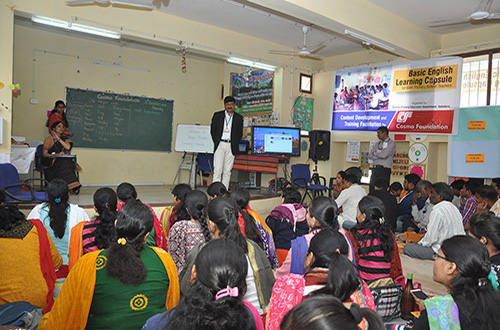
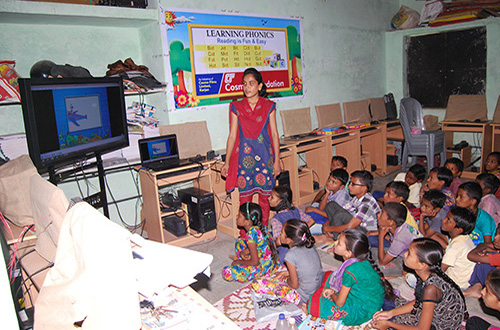
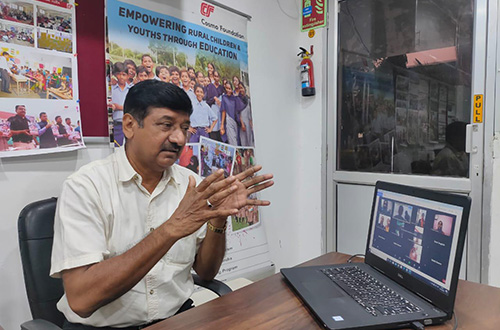
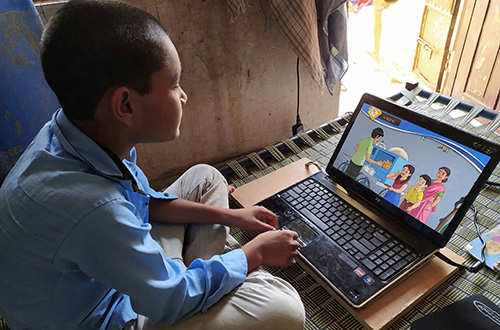
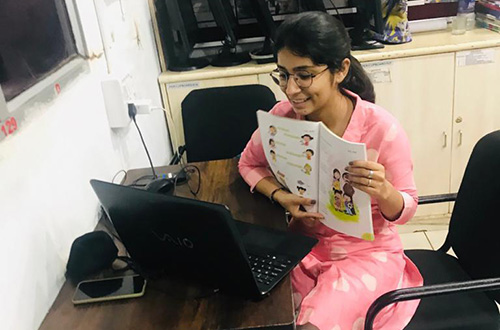










.jpg)



.jpg)















.jpg)




















.jpg)

.jpg)

.jpg)






.jpg)





























